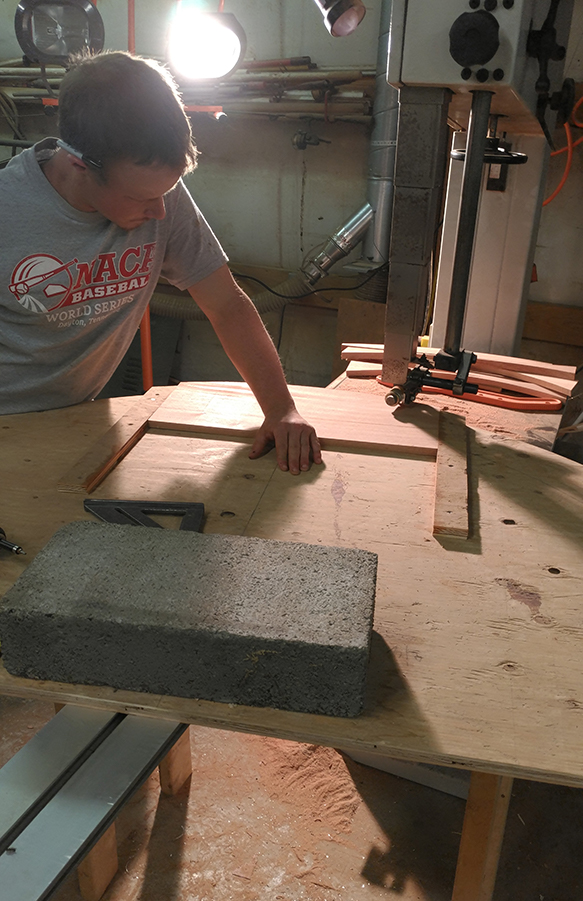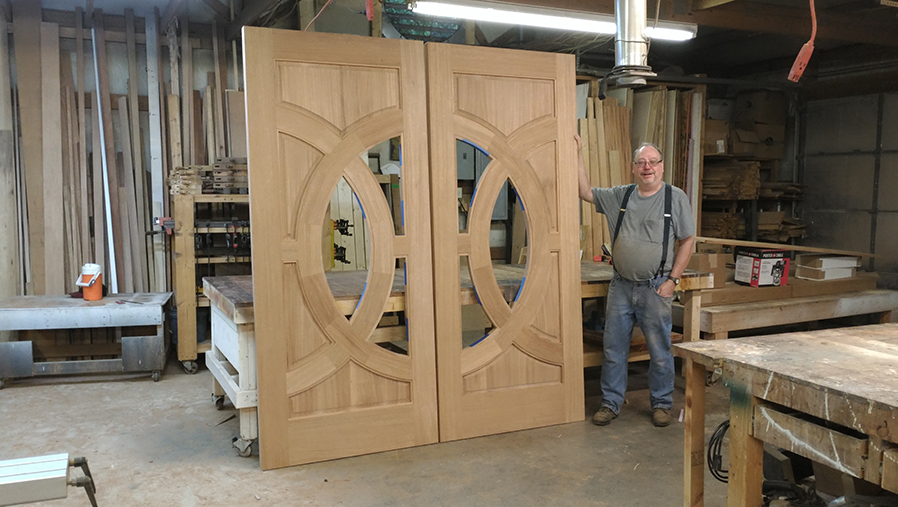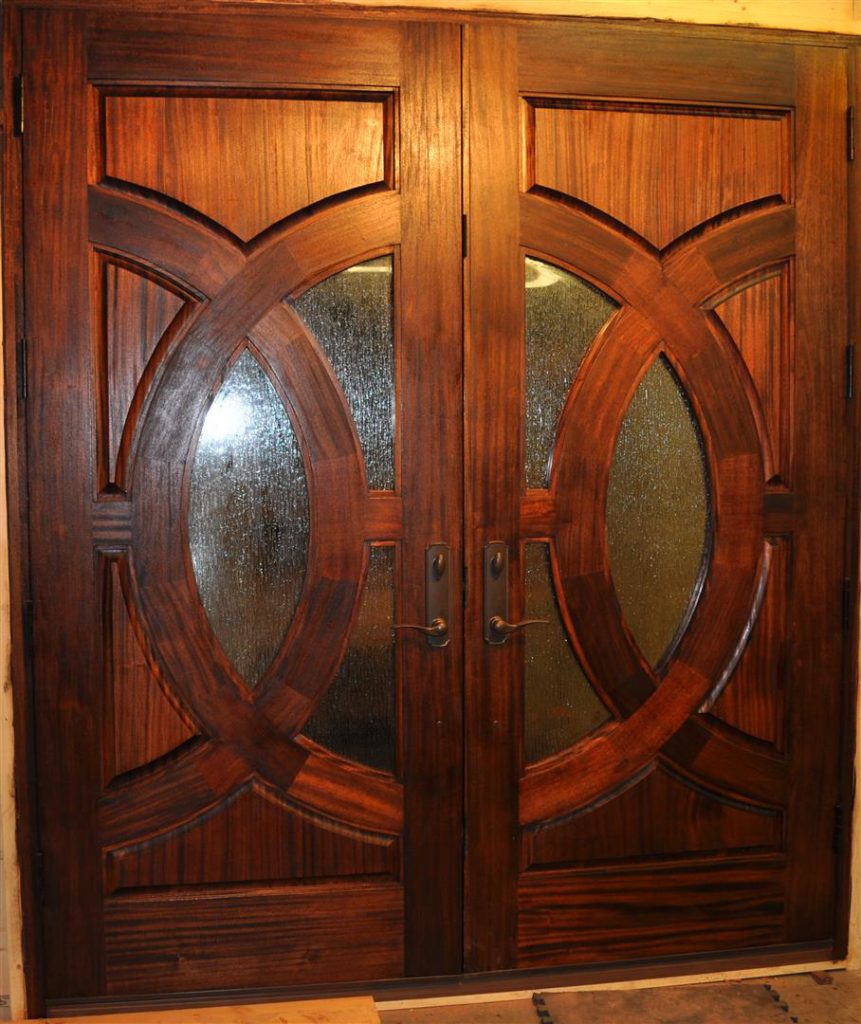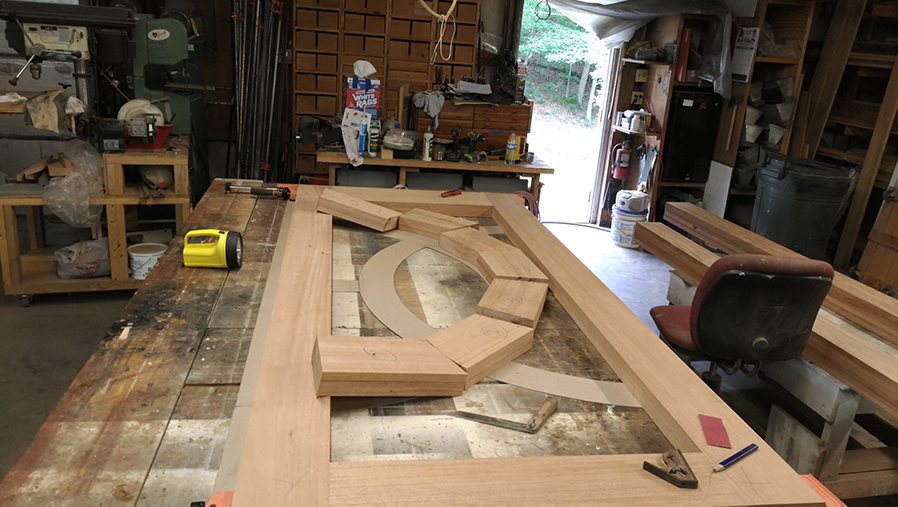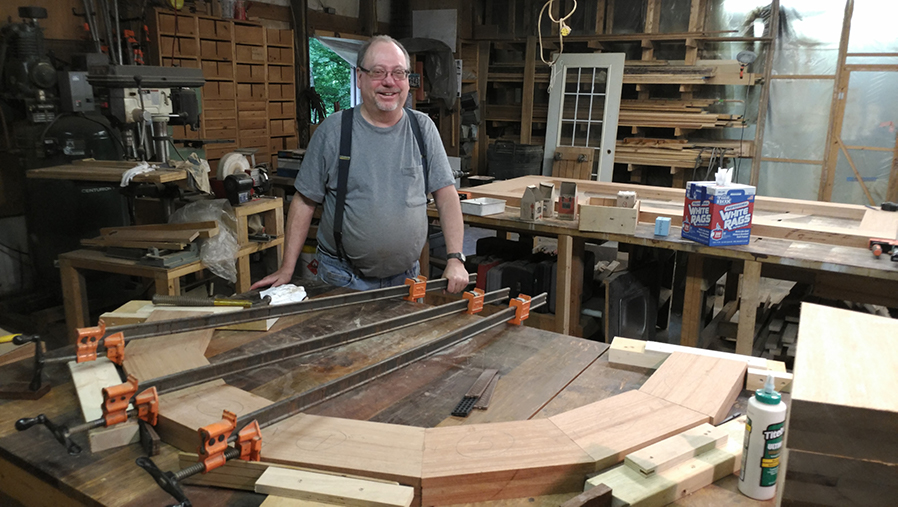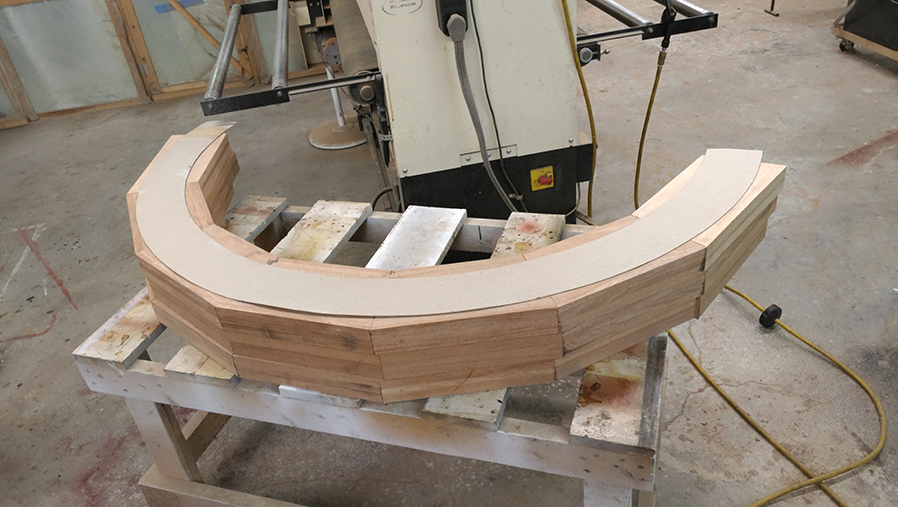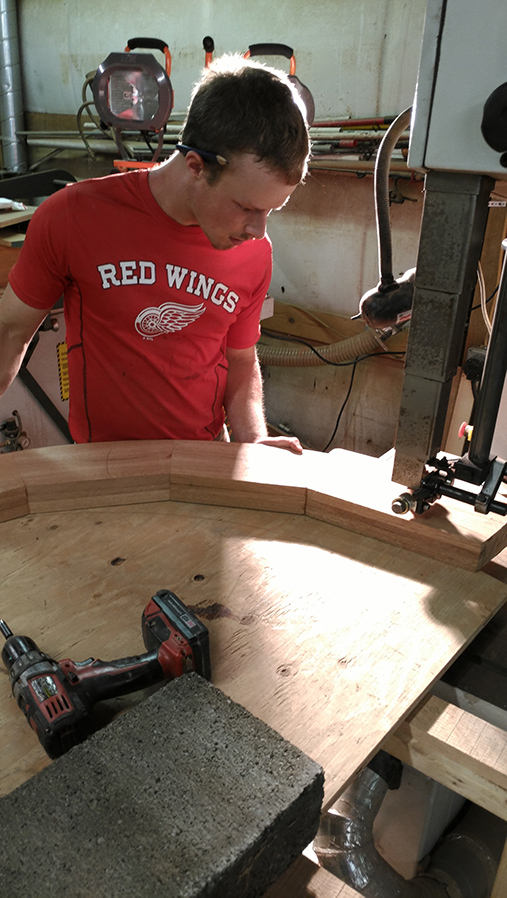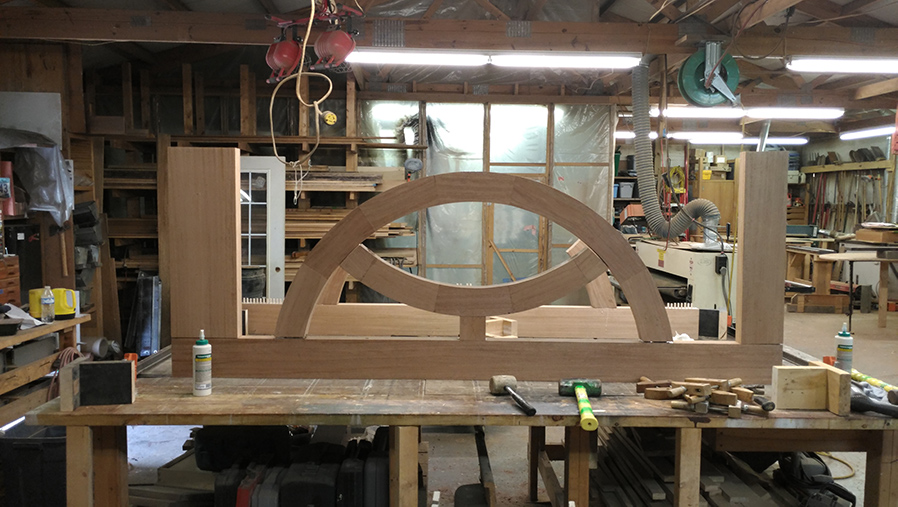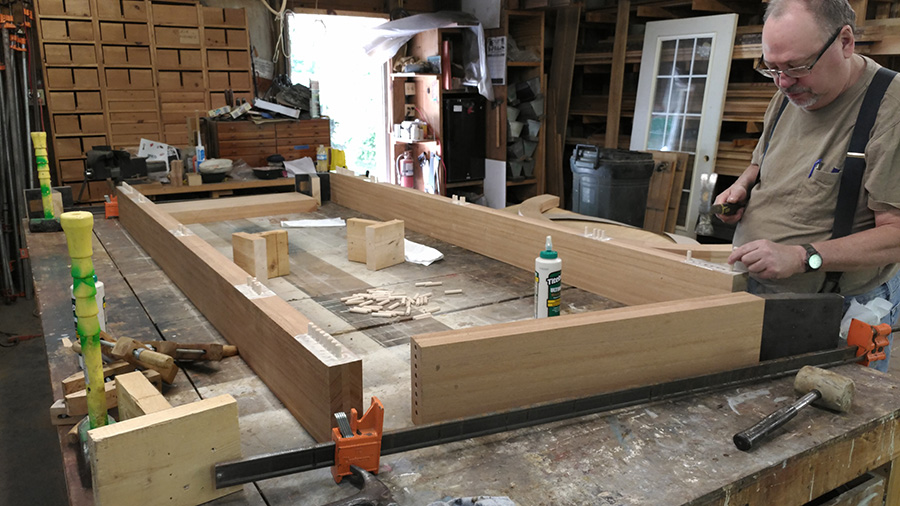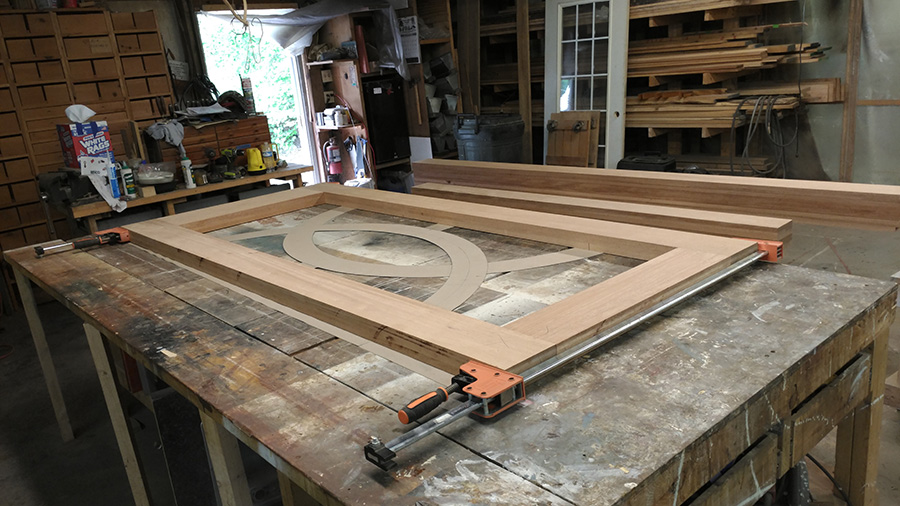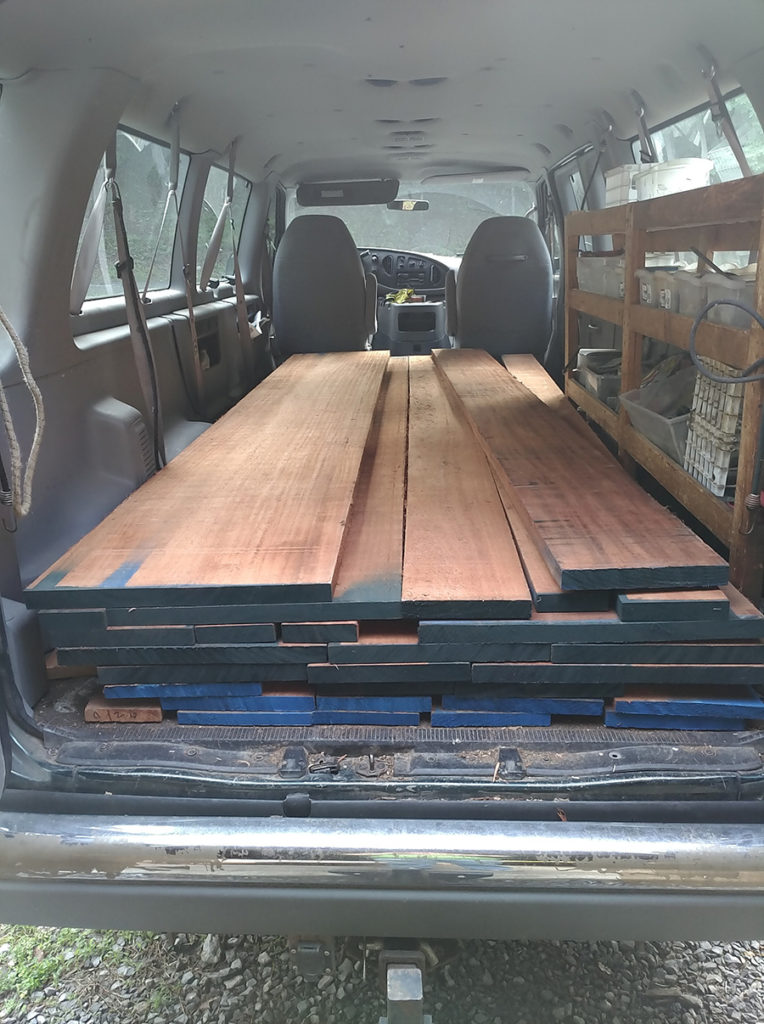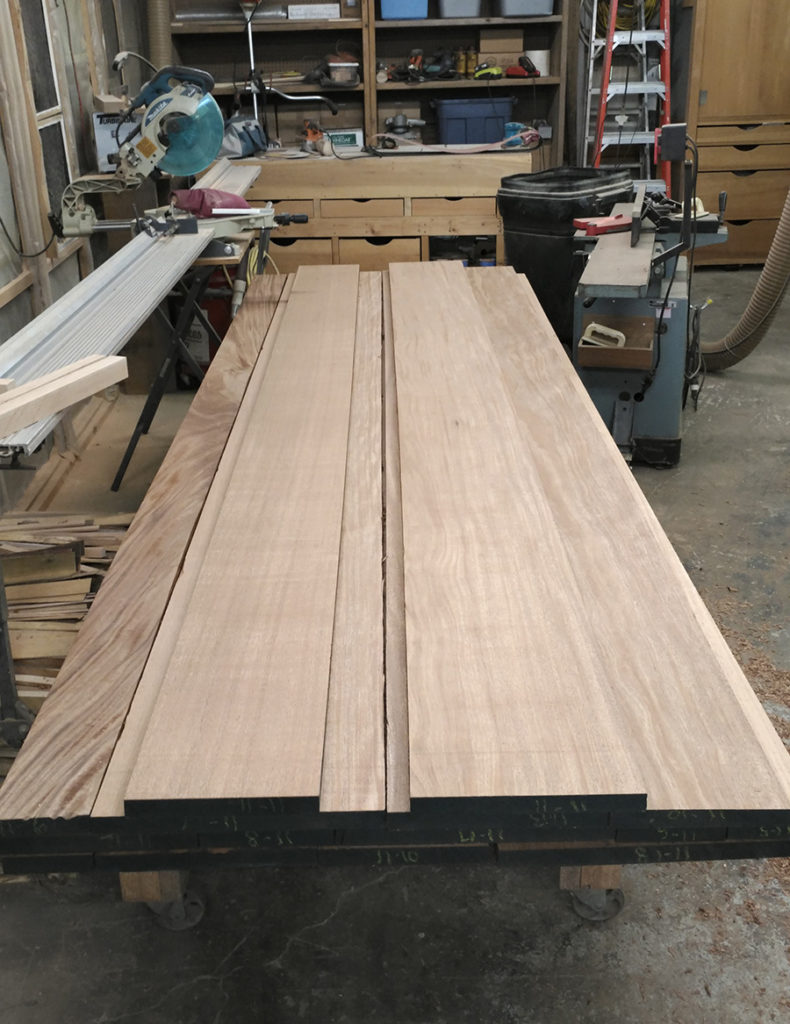
Double doors can be double trouble. That old (really old) gum commercial keeps coming to mind “two, two, two mints in one.” With my apprentice at my side (OK— maybe Batman and Robin is a better image) we dived into the double-doors hardware dilemma with uneasy confidence. Oh sure we can build complicated contraptions but can we do so without making a major mistake? These could have been your doors we honed our skills on but it was some other guy’s—so there’s that. Figuring out a one-off project can be disconcerting sometimes. You keep worrying—what if I botch this?
BIG Doors Need Better Hardware
Our recent big custom doors project involved a lot more than typical woodworking. The hardware package was a project in itself. It was a learning curve for Tim and I as we worked through the preparation and installation of a new (new to us) line of products.
My original contract to build these doors included all of the woodworking plus there was an allowance of man hours to install customer supplied hardware. That included hinges, threshold, weather stripping, lock sets, and any head or foot bolts.
When building double doors the hardware and installation of it can be pretty demanding. With two doors that open and close independently there is the strong likelihood of air and light leaks showing up in the completed project. I knew that from having installed a good many double door units back in my construction days. Now Tim, he was entirely unaware but that is OK—and I am unsure why I brought this fact up except it just popped into my enigmatic mind. So, there we were, two guys trying to build the big doors and not get into trouble along the way.
Lock Those Custom Doors Up Tight with Endura Trilennium ®
My customer had been to Europe and seen the great locking systems used there. He searched on-line and discovered the Endura Trilennium® Multi-Point locking systems which exhibited the best features available. These high quality locksets were offered in three-point and five-point systems. My customer was concerned about security so he bought the five-point locking system. That meant that the active panel of the two door entry latched at five points every time the door closed—head bolt, foot bolt, and three side bolts into the inactive panel. Man, what a system!
The Endura locking system was great but Tim and I were the poor slobs who had to figure out how to finish this complex hardware installation to look clean and operate professionally. I don’t know about you but I am not a magician and neither is Tim. We are just two guys with tools (OK lots of tools) who try to produce great work. So here we were with two huge custom mahogany art doors we had built and a stack of hardware parts we barely understood.
Planning a Smooth Installation
One thing I was glad for is that we were able to purchase all of the hardware pieces from the same company. That was important to me because I wanted to make sure that every part interacted with every other part correctly. I did not want any ugly surprises when we got to the end of the project. If there are any ugly surprises I always blame them on Tim no matter what. There is nothing he can do about it because there are only two of us here so, well—just, so, I guess.
NEW TOOLS—YIPPEE!
One of the complications with this type of high quality hardware is that the doors have to be custom routered along the entire front edge to receive the hardware. You can’t just do this work with your handy Black and Yellow router that you have dragged from job to job for the past twenty years. You have to have a custom router jig and a high-test plunge router to do the work. The whole router jig set-up cost north of $2,500 which the customer agreed to partially supply and I paid the rest. It is an impressive system with its red, yellow, and green stops and guides that are designed to help you avoid those ugly surprises mentioned previously.
Apprentice & Friends On the Job
As for me, I slowly backed out of hands on work with this part of the door project. I remained only a few feet away but let Tim (made Tim?) take over. He did a great job figuring out how the system worked. I should mention here that Tim was assisted by our friend Sam and his son Jonathan for over two days. The extra sets of hands proved valuable (‘invaluable’ would have sounded more sophisticated but what does invaluable really mean?). A few years ago Sam told me that if I ever tried to give him anything that even looked like money he would never help me again. We did sneak him a box of treats at Christmas one year yet he still comes out when I need extra help. But I have drifted from our story about the big doors hardware.
I try to give Tim important roles in our shop work whenever I can. Having him figure out the routering work was good for him because it taught him he really can figure out this stuff and he can produce exceptional work. I want him to have confidence and skills so that he can work without me around. It is good for both of us. Today while I am typing this Tim is down in the shop repairing veneer work on a walnut desk and getting it ready to re-stain. Someday he will not need me at all and will fly away but in the mean time I am blessed with a good helper and he is learning a worthwhile trade. So I guess this is my unashamed recommendation to try a trade apprenticeship relationship if you can. Everybody gains by it.
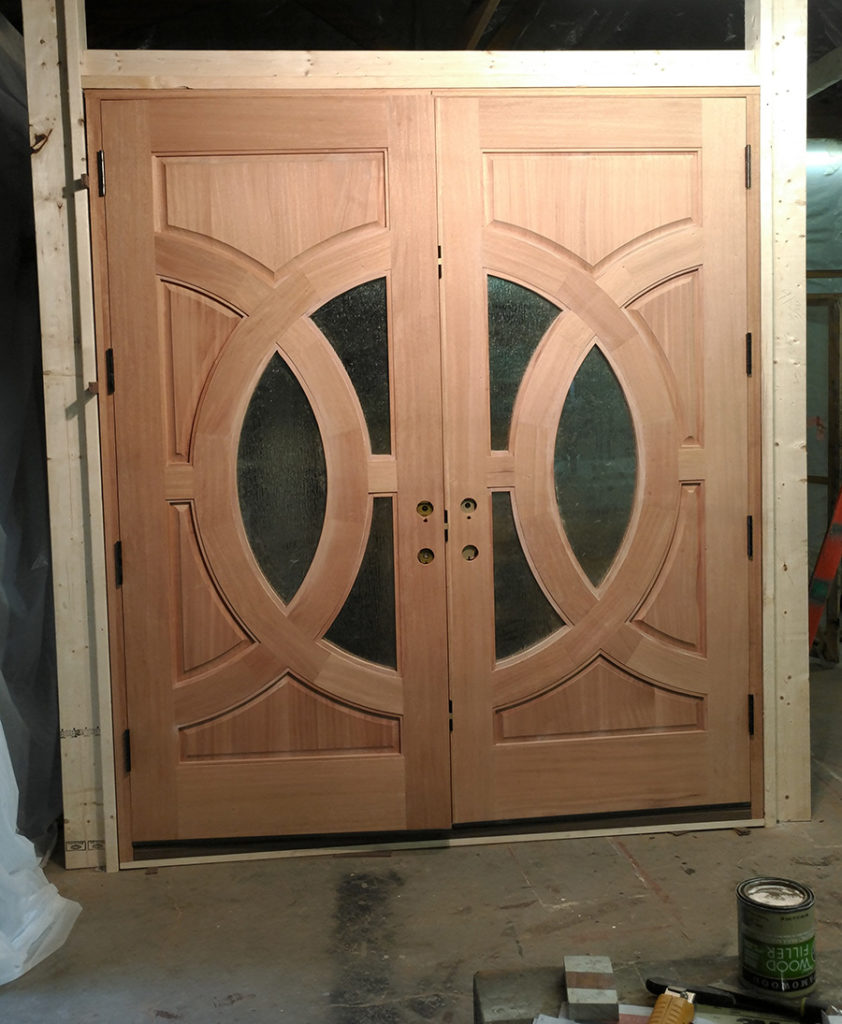
Hanging our custom doors and getting ready to test our installation of the Endura Trilennium® five-point locking system.
The Sweet Sound of Success!
Once the routering for the hardware was completed we installed the Endura Trilennium® hardware and hung the doors. The big ta-da moment came when we (Tim) got the knobs and levers attached and we tested the system. Click-chunk it worked smooth as a, I don’t know what, just smooth as.
I still needed to mortise in the strike plate at the head jamb. I had to do it standing on a step ladder looking upside down with glasses on, then off, then on a hundred times due to my eye correction difficulties. In a shadowed location, no way to accurately mark the dark wood, and nerve damaged hands it was one of the most difficult mortise jobs I have ever completed. I thought my arms were going to fall off. Fortunately they did not as demonstrated by the fact that I can type this monograph.
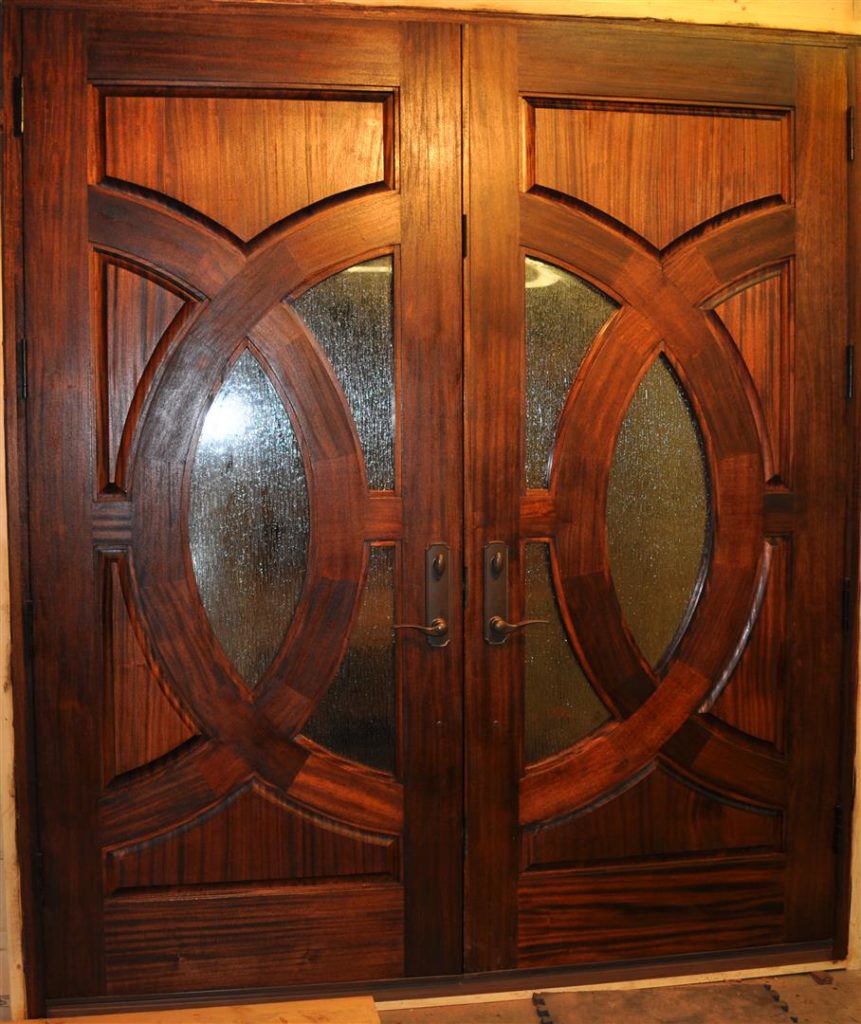
Completed set of custom doors with installation of Endura Trilennium locking system hardware.
Onward! To Even Bigger Doors.
Now we own the (rather expensive) routering guide and we have that valuable experience. Plus we have another set of complicated doors built and working. We are trained and ready for bigger fancier doors yet to come. We conquered the eight foot tall doors challenge. Ten foot tall doors next time?
See another one of our custom door projects from start to finish >>> HERE.


